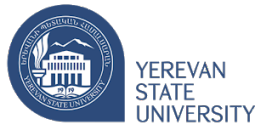Future of Education: Leading for Equity
Speakers:
- Alexander Hakobyan (Director of External Affairs of Teach for Armenia)
- Larisa Hovhannisyan (Founder of Teach for Armenia)
Hripsime Khanzadyan (Teach for Armenia, Head of Selection)
According to a UNICEF report on Child Poverty in Armenia (2016), which relied on national poverty statistics (Living Condition Survey, 2014), nearly 40% of children in Armenia are categorized as poor or extremely poor. While children represent a quarter of all individuals categorized as “poor,” a higher percentage were found to be “extremely poor,” concluding that children are the most vulnerable group in regards to poverty (especially in light that children represent a smaller share of the population at 26%). Poverty rates among children are higher in rural communities, again correlating with data analyzed by Caro & He.
In order to measure the multidimensional nature of poverty, UNICEF uses a mechanism called the Multiple Overlapping Deprivation Analysis (2016), which examines a child’s “survival, development, protection and social participation”(UNICEF Armenia, 2016, p.8). Indicators in the analysis include access to education, leisure, social relations, as well as clothing for ages 0-6, 6-14, and 15-17. For Armenia, the analysis found that children in Armenia are deprived of two or more dimensions while around 90% of all children are deprived of at least one dimension. There is a significant difference in deprivation between children living in rural versus urban areas. While around half of the children living in the cities are deprived in two or more dimensions, in rural areas the percentage is about 80%. Meanwhile, nearly every child living in a rural community is deprived in at least one dimension, whereas the percentage drops to 82% in urban areas.
In Armenian context, a significant achievement gap exists between students from lower and higher socioeconomic backgrounds (Caro & He, 2018; He & Caro, 2018; Daveyan, 2019). Examining data from the Trends in International Mathematics and Science Study (TIMSS) between 2003-2015, Caro & He (2018) found that children from less affluent families performed significantly worse in mathematics and science in comparison to their weather peers. Moreover, the achievement gap widened with time. The authors also stressed that socioeconomic background is not the only determiner of academic achievement, as some children from deprived families scored high in the exams -- therefore indicating that interventions in education can mitigate the impact of socioeconomic status. Furthermore, the study underscored the rural and urban divide, revealing that children from cities frequently outperform their rural counterparts.
Important Dates ECER 2022
07.12.2021 | Submission starts |
31.01.2022 | Submission ends |
01.04.2022 | Review results announced |
02.04.2022 | 10 days' period to confirm in-person or online presentation |
25.04.2022 | Registration starts |
15.05.2022 | Early bird ends |
25.06.2022 | Presentation times announced |
30.06.2022 | Registration Deadline for Presenters |
Conference Venue
Yerevan State University
1 Alex Manoogian
0025 Yerevan
Armenia
http://www.ysu.am/main/en

